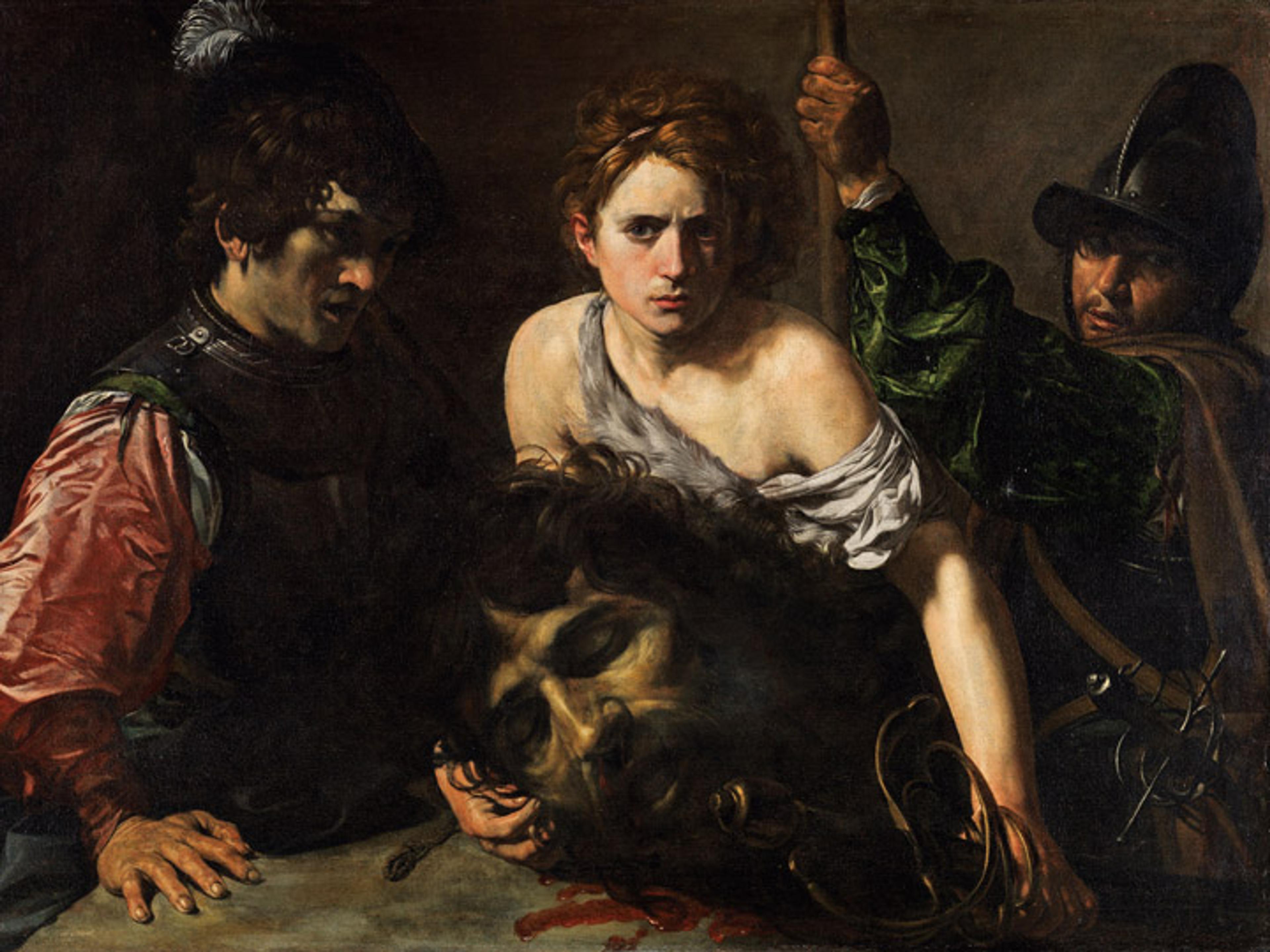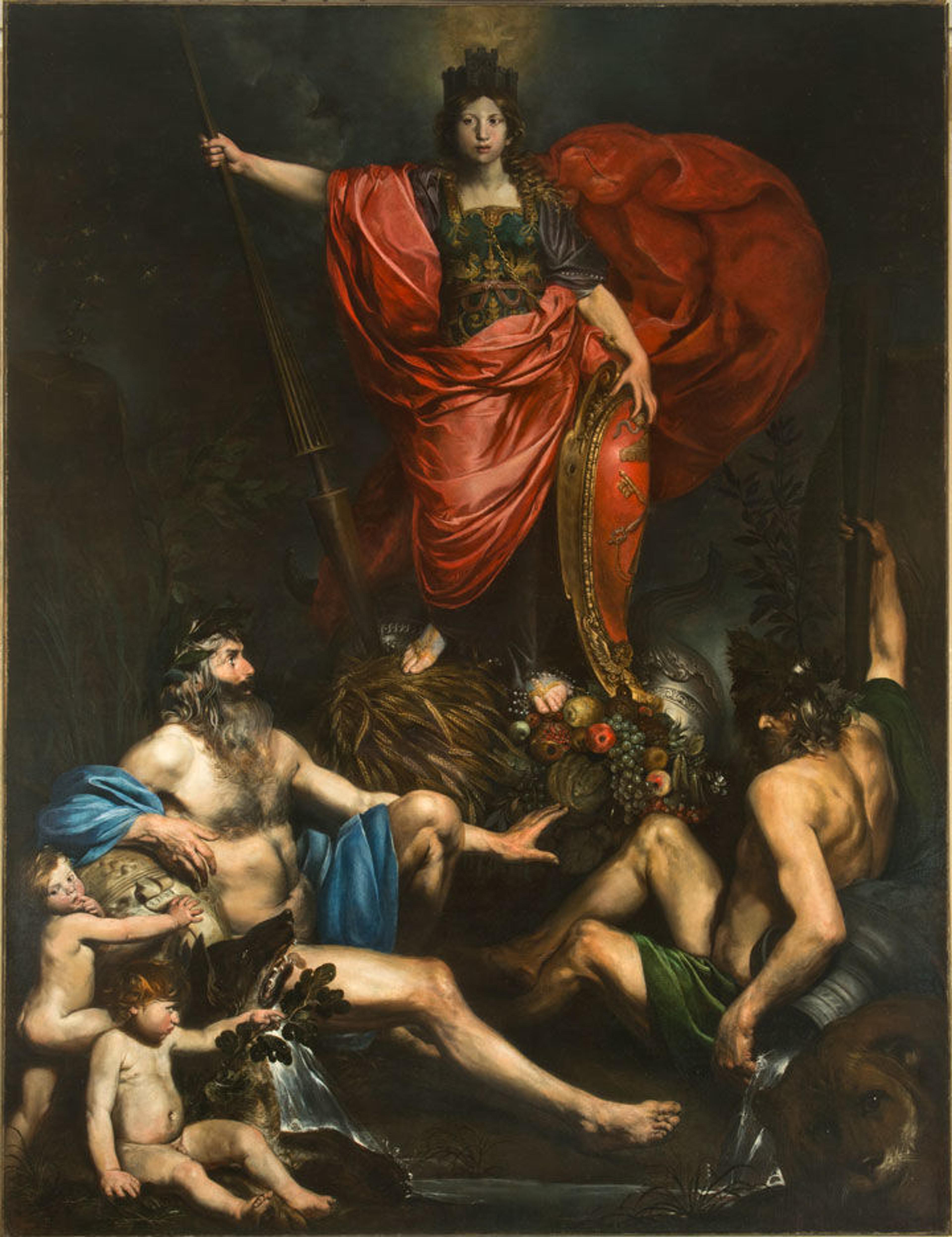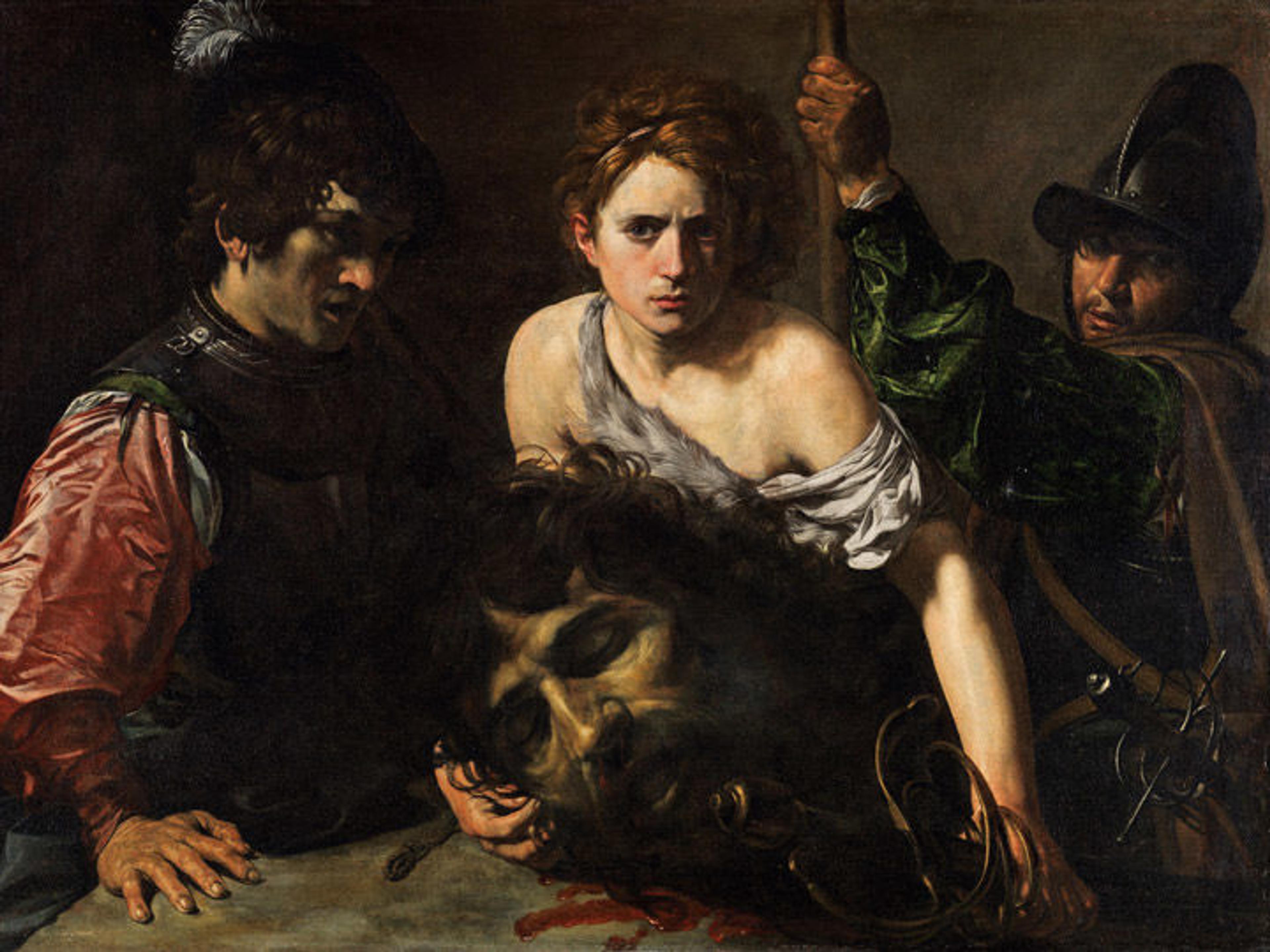
Valentin de Boulogne (French, 1591–1632). David with the Head of Goliath, ca. 1615–16. Oil on canvas, 39 x 52 3/4 in. (99 x 134 cm). Museo Thyssen-Bornemisza, Madrid
"Daydream transports the dreamer outside the immediate world to a world that bears the mark of infinity." —Gaston Bachelard
«In his 1958 work The Poetics of Space, the French philosopher Gaston Bachelard traces connections among the human consciousness, intimate spaces, and poetics—thus devising a philosophical approach for better understanding our thoughts, daydreams, and memories. He posits that within the most secure and intimate place of all, the home, humankind is able to daydream in a fluid state, and those reveries are driven by the creation of the poetic image. Using examples as varied as a windswept garret and the inner mysteries of a wardrobe, Bachelard builds upon the idea that the dreamer, the creator, the poet, the artist within each of us is able to achieve utmost peace and creativity by giving life to poetic images within the walls of our private domestic spaces.»
The psychology of that human need for solace within architectural interiors floated through my mind the first time I walked through Valentin de Boulogne: Beyond Caravaggio. Like many, I did not know much about the greatest French follower of Caravaggio, despite my adoration for the bad boy of the Italian Baroque. Thankfully, as the editor of the blog series for this exhibition, curator Keith Christiansen had already showed me the aspects of this artist's work that command attention: Valentin's ability to suspend time in his scenes, the realism of the facial expressions and poses he depicts, and even how this artist was a master of the selfie hundreds of years before mobile photography.
But as I moved from painting to painting in the galleries, I realized that another common thread running through both the interior scenes of Rome's citizenry and the large-scale biblical pictures was a sense of intimate space—of being up close and personal to the figures in each scene, as though I were looking through a peephole into one person's vast imagination. Bachelard saw a single candle lit in a window as a portal into the theater of domestic existence, and Valentin was here to light the match for me.

David with the Head of Goliath, for instance, is stripped of any sense of the pompous triumph one would expect to see in a depiction of David's victory; instead, the shepherd boy displays deep emotional conflict in his facial expression as he holds the decapitated head of his gigantic foe. Valentin sets the scene in a dark interior in which the four figures (well, three figures and a head) are tightly packed into the picture's window, with the surface on which David places the head looking as ordinary as any dining table of the time.
Left: Detail view of David with the Head of Goliath
Rather than depicting this story's carnage in literal fashion, Valentin instead chooses to paint the poetic image that the words of the story conjure. And since the root of any poetic image lies in the daydreams created within our intimate homes, he brings the scene indoors to better amplify the human conflict at work, as David wrestles with the universal ideas of vainglorious triumph achieved through violence. By reducing the scene to a simple interior, Valentin makes infinite the connection the viewer has with the subjects at hand.

Valentin de Boulogne (French, 1591–1632). Four Ages of Man, ca. 1627–29. Oil on canvas, 37 13/16 x 52 3/4 in. (96 x 134 cm). The National Gallery, London
Now compare that work with Four Ages of Man, which Valentin painted more than a decade after the David picture. Here we see the same interior, possibly even the same simple table, around which the artist places a child with a toy cage, a young man and his lute, a middle-aged soldier who wears both armor and a poet's laurels, and an old man stoically clutching a glass of liquor.
A lifetime of experience is encapsulated into one scene, decades' worth of human joy and suffering, yet each of the four versions of the subject remains connected to this inner domestic space, even as life continues to force them out at times into the front lines of the world. Whether one interprets the scene as the child daydreaming about the life he will lead and the man he will become, or as the old man looking back on his life through a sea of memories, the emotional result is the same: humankind is anchored to the concept of the home, and the security it brings our many thoughts, dreams, and aspirations.

Valentin de Boulogne (French, 1591–1632). Allegory of Italy, 1628–29. Oil on canvas, 10 ft. 9 15/16 in. x 96 7/16 in. (330 x 245 cm). Villa Lante al Gianicolo, Institutum Romanum Finlandiae, Rome
On the opposite end of the spectrum, scenes of immense drama are still presented in an intimate fashion. Allegory of Italy, one of the largest pictures on view in the exhibition, depicts a female figure crowned with the power and valor of Italy who is positioned above two river gods and the fabled twin brothers Romulus and Remus. The ideas presented in the picture are titanic in scope, yet the presentation again has all of the figures encased in a tight space, the darkness of the background and the lack of clarity in the landscape again hinting at an imaginative construction of the image, not a literal one.
For Bachelard, "immensity in the intimate domain is intensity, an intensity of being, the intensity of a being evolving in a vast perspective of intimate intensity. . . . When the dreamer really experiences the word immense, he sees himself liberated from his cares and thoughts . . ." As such, the poetic image that seeks to communicate the concept of immensity must be translated into a space easily recognized and embraced by our human psyche, which is in the intimacy of the home. The woman, men, children, and animals in Allegory of Italy are not braving the elements in the wild; rather, they are clustered together as if around a fireplace in a domestic den.
To grasp the concept of immensity and to create such vastness in a poetic fashion is to concentrate the intensity of the human experience into an intimate scale to such a degree that one breaks free of anguish and experiences liberation of thought and imagination. Like the great French thinkers that would continue to shape his country in the following decades and centuries, Valentin captured the beauty and the value of the everyday through his poetic medium, and used the intimacy of the interior, home to the electrical current that is our individual imaginations, to bring a sense of familiarity to his paintings and to showcase the wide gamut of experience that connects all of humankind.
Related Links
Valentin de Boulogne: Beyond Caravaggio, on view at The Met Fifth Avenue through January 22, 2017
